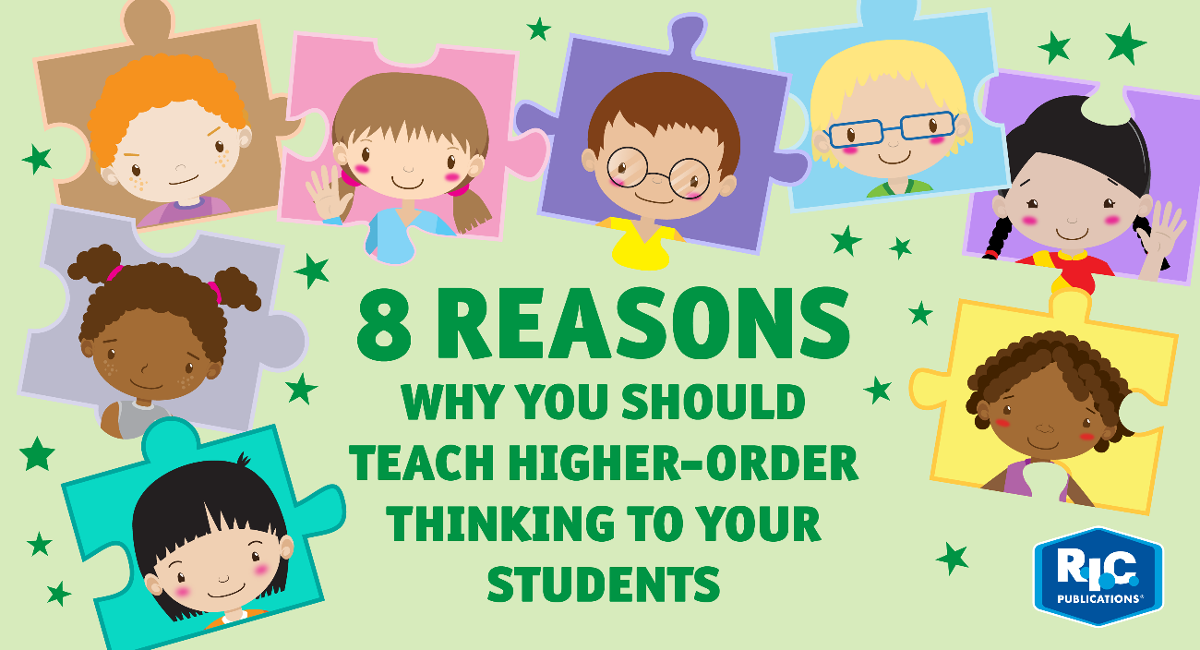- Tuesday 25 June 2019
- 0 Comments
Higher-order thinking (also known as critical thinking) skills are those we can teach our students that don’t just apply to one subject, but across all subjects and in real-world situations. Higher-order thinking skills give students the tools to think in complex ways and requires a higher level of understanding than other subjects where they may be able to get through by memorising facts.
Often, teachers report that these are the skills that curriculums lack, yet it is an extremely important part of helping children develop into clever, well-rounded individuals. Read on to learn eight reasons why you should be teaching higher-order thinking to your students.
1. It encourages a deeper connection with subject matter
While we all endeavour to make our classes as interesting and interactive for our students as possible, some subjects and topics require a lecture-like format. Higher-order thinking requires students to engage with the subject matter, both in the classroom while learning about how to use higher-order thinking, and after it, as the skills they learn there will transfer over into their other subjects.
2. It creates discussion
The nature of higher-order thinking opens the room to a wider discussion, class-wide and in smaller groups. It encourages students to not only listen to the information you are teaching them but also to freely ask questions. You can create an environment where shy and quiet children feel able to ask a question without judgement from the class.
3. It teaches students to link concepts
Subjects and topics can feel very secular, especially in primary school curriculums, but higher-order thinking will teach students how to link concepts on their own, without the need for you to hold their hand and guide them. This kind of thinking will be of great benefit to them in later life when they’ll be expected to talk about subjects from a wider knowledge base and bring something new to the discussion.
4. It teaches problem-solving skills
By teaching your students higher-order thinking you will teach them structured ways to solve problems and will help them solve problems faster and with more ease. This will prove invaluable for students who initially struggle to see solutions on their own, as it will give them the tools to figure things out independently, and thus their confidence in their own ability will grow exponentially.
5. It helps students see their learning in a real-world setting
One of the best things about teaching higher-level thinking is your ability to give your students real-world situations. Many subjects feel isolated and something they only consider at school; however, higher-level thinking can be applied outside of the classroom. You will have the opportunity to give them real-world situations and ask them to think critically about them or to solve a problem they might encounter out in the real world.
6. It inspires creative thinking
You can use higher-order thinking to encourage creative thinking in students. You can encourage them not to necessarily find the ‘correct’ solution, but to find a solution that makes sense to them, something that may be considered thinking outside of the box. This kind of thinking is a skill many employers desire and will help them become valued problem-solvers, not just people who can follow a set of instructions.
7. You can ask your students to think and learn differently
We all know and understand that people think and learn differently; however, it can be a challenge to put this knowledge into practice when you’re in a classroom with twenty to thirty children, all who learn in unique ways. You have to find a middle ground in order to get the information across, but when your students understand how to implement higher-order thinking they will be able to take a level of responsibility for their own learning and transfer the information into a form that best serves them. If they learn best visually, they can create their own scenarios in their mind to see the information in the form that makes the most sense to them, instead of being unable to engage in the lesson.
8. It teaches children to think about their answers—not just give the right one
We all have bright students who pick up and memorise information easily, and that’s a great skill for them to have as they move forward in their schooling. However, there is a big difference between knowing the answer and engaging with it, genuinely understanding it. Higher-order thinking encourages children to bridge that gap between the right answer and understanding exactly why it’s correct.
If you’re looking to learn more about how you can introduce higher-order thinking into your classroom, check out our new release Higher-order thinking skills. Through a range of engaging and challenging activities designed to test and strengthen problem-solving skills, this series helps students make deeper connections by integrating their learning across key curriculum areas.
